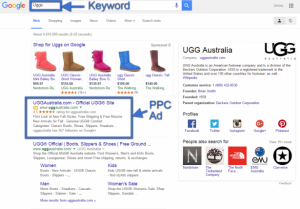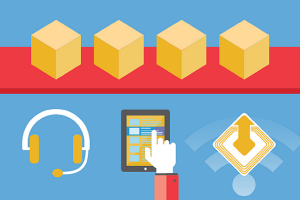When choosing to outsource a current product or service to an external supplier, a main objective is to maintain at least the same quality that you are used to or you’ll want to improve it. When several of your organization’s products or services are provided by an external party, the process of checking whether the contractor’s delivered quality adheres to your agreements can be a cumbersome and overwhelming process, let alone tedious.
An overview of all current contracts within the organization and the corresponding details can really be a step forward, but active contract management goes beyond that. IT service management solutions create a viable communication system that allows members of various teams and departments to manage the contract’s development, as well as to track its progress and development. These software solutions, specifically, shed a great deal of insight to the contract management process and ensure proper lifecycle management of the document.
Who does what?
Contract managers, SLA managers, supplier managers and purchasers: Each of these people are likely involved in a tender procedure. The problem, however, is that nearly every organization interprets these functions differently and everybody has their own wishes concerning contract management. Documents that belong to a contract are often kept by contract managers, either digitally or in a paper archive. Whereas the service level managers want only the most important appointments from current contracts to be available, like supply levels and corresponding lead times. They can use these agreements for communication with the end customer and for managing suppliers. When a contract needs to be renewed, there is often a shared need for information from the service level manager and the contract manager. Here there is an advantage for both parties if they can both see why the supplier was selected during the tender procedure and what was included in the list of requirements.
IT service management solutions allow for the automation of these processes allowing these management level employees the ability to register and manage contract details, like the end date and the final termination date of an agreement. Also, the solutions allow for the possibility of tracking several phases of a contract, from phases to phase, from its origin to signature. Besides registering these details, such solutions also allow for the possibility of including several phases of a contract – for example, from initiation to evaluation – and all related activities pertaining to the scope of work. Thus, through the tracking module organizational leaders can monitor the activities and plan for each phase of the contract.
Initiation phase
The initiation phase is usually started as a result of a contract that is about to expire, but can also be started when the organization needs an improved or new service. This could be based on results of a customer satisfaction survey, for instance. In this phase the stakeholders compile a list of requirements and lay this down as a change activity. You can subsequently record the internal communication for supplier selection in a following activity. When it is known which suppliers will be asked for a quote, the list of requirements can be sent from the service management solution with the activity reference number as the subject. Received quotes can then be easily be placed, or cataloged, in the service management software. Once it has decided which supplier will receive the contract, the next phase can be started when delivery commences.
Execution phase
During the duration of the contract, it’s important to measure how your organization experiences the supplier’s services or engages with the contractor. You can do this by creating performance reports of incoming calls about the delivered services at fixed times, as well as also proactively sending customer satisfaction surveys to your employees to ask about their experiences with the delivered products or services. The results can be discussed with your supplier during the planned interim evaluations, so the delivery of products and services can be adjusted within the duration of the contract.
Evaluation phase
The activities in the evaluation phase can be placed in in the IT service management solution in the change phase of the same name. You can start the evaluation phase when you receive a notification from the Contract Management and SLM module that the termination date of a contract is coming up. In this phase it is advisable to come to a final conclusion on the supplier’s delivered services based on the interim evaluations. You can now determine the costs of the delivered services and whether they correspond with the estimated costs. It is also important to evaluate the contract management process in this phase. Does compiling of the list of requirements really take that much time? Were the right people involved with the supplier selection? Were all interim evaluations performed correctly?
Full circle
If you choose to extend the contract with your current supplier, you can skip the initiation phase and quickly start a new execution phase. When it is necessary to plan a new initiation phase with activities, you only need to choose a new template. This way, the IT service management solution shows you the way through the active contract management process.
Business & Finance Articles on Business 2 Community(55)



